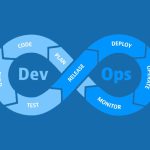Introduction 🧠
Reinforcement Learning (RL) is a powerful branch of machine learning that enables software applications to learn and improve through interactions with their environment. By maximizing rewards and minimizing penalties, RL models can autonomously optimize processes, make decisions, and adapt to changing conditions. This makes RL ideal for applications such as robotics, gaming, autonomous vehicles, recommendation systems, and financial modeling.
In this article, we’ll explore the fundamentals of reinforcement learning, its implementation process, and practical use cases, providing a step-by-step guide to integrating RL into software applications.
What is Reinforcement Learning? 📚
Reinforcement Learning is a type of machine learning where an agent learns to make decisions by interacting with an environment. The agent receives rewards for desirable actions and penalties for undesirable ones, guiding it toward optimal behavior. RL is inspired by behavioral psychology, simulating how humans and animals learn through trial and error.
Key Components of Reinforcement Learning:
- Agent 🧠: The entity that learns and makes decisions.
- Environment 🌍: The external system with which the agent interacts.
- State 📍: The current situation or context of the environment.
- Action 🎮: The choice made by the agent to interact with the environment.
- Reward 🏆: Feedback that guides the agent’s learning process.
- Policy 📝: The strategy that determines the agent’s actions.
- Value Function 📊: The expected long-term reward of different states and actions.
Popular Algorithms in Reinforcement Learning 💡
Several RL algorithms are used to train agents, each suited to different applications:
- Q-Learning 🧩: A value-based algorithm that learns the optimal action-value function.
- Deep Q-Learning (DQN) 🧠💻: Combines neural networks with Q-Learning for complex environments.
- Policy Gradient Methods 📝: Optimize the policy directly to maximize expected rewards.
- Proximal Policy Optimization (PPO) 🧠: A popular algorithm in deep reinforcement learning, balancing performance and stability.
- Actor-Critic Methods 🎭: Combine value-based and policy-based methods for faster learning.
How to Implement Reinforcement Learning in Software Applications ⚙️
Implementing RL involves several steps, from defining the problem to training and deploying the model. Here’s a step-by-step guide:
Step 1: Define the Problem and Environment 🌍
Start by clearly defining the problem your RL model will solve. Identify the environment, possible states, available actions, and reward structure. Use simulation environments if real-world interactions are impractical.
Example:
- Problem: Optimize customer recommendations in an e-commerce app.
- Environment: User preferences and browsing history.
- States: Current user context (e.g., products viewed, purchase history).
- Actions: Recommend specific products.
- Rewards: Positive reward for purchases, negative reward for ignored recommendations.
Tools:
- OpenAI Gym 🏋️♂️: A popular toolkit for developing and testing RL algorithms.
- Unity ML-Agents 🎮: Ideal for game development and simulation environments.
Step 2: Choose the Right RL Algorithm 🧠
Select an RL algorithm that fits your problem’s complexity, data availability, and performance requirements. For example:
- Simple tasks: Q-Learning or SARSA.
- Complex environments with high-dimensional data: DQN or PPO.
- Continuous action spaces: Actor-Critic methods or PPO.
Step 3: Build the RL Model 🏗️
Implement the RL algorithm using machine learning frameworks like:
- TensorFlow 🧠💻: Offers TensorFlow Agents (TF-Agents) for RL applications.
- PyTorch 🔥: Known for its flexibility and ease of use, with libraries like Stable-Baselines3.
- Stable-Baselines3 🧩: A reliable library for RL with pre-implemented algorithms like DQN, PPO, and A2C.
Code Example (Deep Q-Learning with PyTorch):
python
-----------------
import gym
import torch
import torch.nn as nn
import torch.optim as optim
import numpy as np
from collections import deque
import random
# Define the neural network for Q-learning
class QNetwork(nn.Module):
def __init__(self, input_dim, output_dim):
super(QNetwork, self).__init__()
self.fc1 = nn.Linear(input_dim, 128)
self.fc2 = nn.Linear(128, 128)
self.fc3 = nn.Linear(128, output_dim)
def forward(self, x):
x = torch.relu(self.fc1(x))
x = torch.relu(self.fc2(x))
return self.fc3(x)
# Initialize environment and neural network
env = gym.make("CartPole-v1")
input_dim = env.observation_space.shape[0]
output_dim = env.action_space.n
q_network = QNetwork(input_dim, output_dim)
optimizer = optim.Adam(q_network.parameters(), lr=0.001)
# Hyperparameters
gamma = 0.99
epsilon = 1.0
epsilon_min = 0.01
epsilon_decay = 0.995
batch_size = 64
memory = deque(maxlen=10000)
# Training loop
num_episodes = 500
for episode in range(num_episodes):
state = env.reset()[0]
total_reward = 0
done = False
while not done:
# Choose action using epsilon-greedy policy
if np.random.rand() < epsilon:
action = env.action_space.sample()
else:
action = torch.argmax(q_network(torch.tensor(state, dtype=torch.float32))).item()
next_state, reward, done, _, _ = env.step(action)
total_reward += reward
# Store experience in memory
memory.append((state, action, reward, next_state, done))
state = next_state
# Train the neural network
if len(memory) >= batch_size:
batch = random.sample(memory, batch_size)
states, actions, rewards, next_states, dones = zip(*batch)
states = torch.tensor(states, dtype=torch.float32)
actions = torch.tensor(actions, dtype=torch.long)
rewards = torch.tensor(rewards, dtype=torch.float32)
next_states = torch.tensor(next_states, dtype=torch.float32)
dones = torch.tensor(dones, dtype=torch.float32)
q_values = q_network(states).gather(1, actions.unsqueeze(-1)).squeeze(-1)
next_q_values = q_network(next_states).max(1)[0]
target_q_values = rewards + gamma * next_q_values * (1 - dones)
loss = nn.MSELoss()(q_values, target_q_values)
optimizer.zero_grad()
loss.backward()
optimizer.step()
# Decay epsilon
epsilon = max(epsilon_min, epsilon * epsilon_decay)
print(f"Episode {episode + 1}, Total Reward: {total_reward}")
env.close()
This example uses the CartPole environment from OpenAI Gym to demonstrate Deep Q-Learning.
Step 4: Train the RL Model 🏋️♂️
Training an RL model involves allowing the agent to interact with the environment repeatedly. Over time, the agent learns to maximize cumulative rewards. Use techniques like experience replay, target networks, and reward shaping to improve training efficiency and stability.
Step 5: Evaluate and Optimize the Model 📊
Evaluate the RL model’s performance using metrics such as average reward, success rate, and convergence speed. Fine-tune hyperparameters like learning rate, discount factor, and exploration-exploitation balance to optimize performance.
Step 6: Integrate the Model into the Software Application 💻
Once the RL model is trained and optimized, integrate it into your software application. Ensure seamless communication between the RL model and other application components. For deployment, consider using tools like TensorFlow Serving, PyTorch Serve, or Docker containers.
Step 7: Monitor and Maintain the RL System 📈
Monitor the RL system’s performance in real-world conditions, collecting data to evaluate its effectiveness. Update the model periodically to adapt to changing environments and ensure continued optimal performance.
Use Cases of Reinforcement Learning in Software Applications 🌍
- Autonomous Vehicles 🚗
- RL enables self-driving cars to navigate complex environments, avoid obstacles, and optimize routes.
- Robotics 🤖
- Robots use RL to learn tasks like object manipulation, navigation, and assembly.
- Healthcare 🏥
- RL optimizes treatment plans, drug discovery, and patient scheduling.
- Finance 💸
- RL is used for portfolio optimization, algorithmic trading, and fraud detection.
- Gaming 🎮
- RL agents power game AI, creating intelligent opponents and adaptive gameplay.
- Recommendation Systems 🛒
- RL personalizes content recommendations in e-commerce, streaming platforms, and online advertising.
- Energy Management ⚡
- RL optimizes energy consumption in smart grids, reducing costs and environmental impact.
Challenges and Considerations ⚠️
- Exploration vs. Exploitation 🕹️
- Balancing exploration (trying new actions) and exploitation (choosing known best actions) is crucial for effective learning.
- Sparse Rewards 🏆
- In some environments, rewards are infrequent, making learning slow and challenging. Use reward shaping to guide the agent.
- Computational Complexity 💻
- Training RL models can be computationally intensive, requiring powerful hardware and efficient algorithms.
- Real-World Constraints 🌍
- Real-world environments are often unpredictable, requiring RL models to be robust and adaptable.
- Ethical Considerations 🤝
- Ensure RL systems make fair and unbiased decisions, especially in applications like healthcare and finance.
Future Trends in Reinforcement Learning 🚀
- Multi-Agent Reinforcement Learning (MARL) 🤖🤖
- Multiple agents collaborate or compete, simulating complex real-world interactions.
- Meta-Learning 🧠
- RL agents learn how to learn, adapting quickly to new tasks and environments.
- Sim-to-Real Transfer 🌍💻
- RL models trained in simulations are increasingly capable of performing well in the real world.
- Human-AI Collaboration 🤝
- RL systems will work alongside humans, enhancing productivity and decision-making.
- AI Ethics and Safety 🔒
- Ensuring RL models behave ethically and safely is becoming a key focus, especially in high-stakes applications.
Conclusion 🏁
Reinforcement Learning is transforming software applications, enabling systems to learn, adapt, and optimize through interaction with their environments. By following a structured implementation process—from defining the problem to training, evaluating, and deploying the model—you can harness RL’s power to enhance efficiency, automation, and decision-making. As RL technology continues to evolve, its applications will expand across industries, driving innovation and shaping the future of intelligent software systems.


